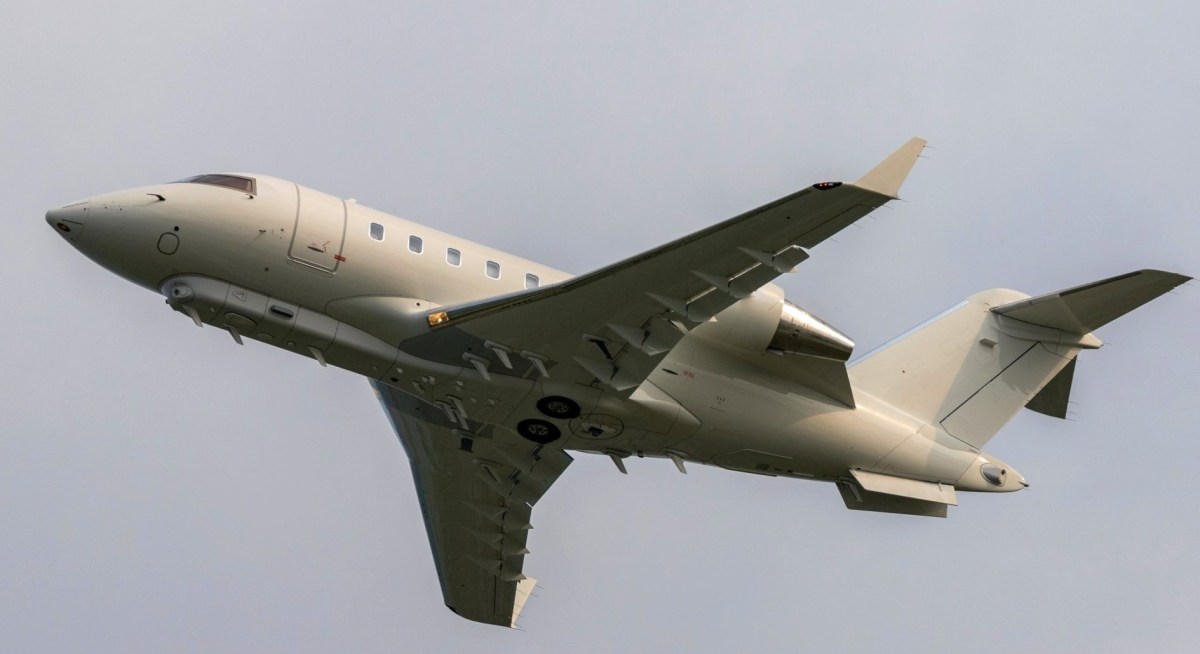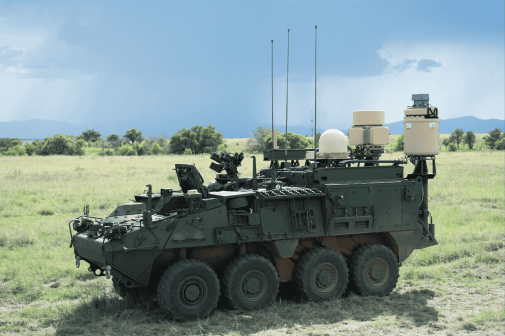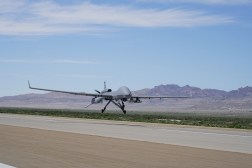Next phase of Army’s HADES aerial intelligence project expected this summer

The Army is expected to move forward on the next phase of a key modernization priority focused on improving aerial intelligence.
Dennis Teefy, the lead official on the Army’s High Accuracy Detection and Exploitation System, or HADES, told FedScoop the service will take the next steps to optimize sensors within the aerial intelligence program for the emerging threats of near-peer adversaries in the coming months.
In June 2021, the Army awarded L3Harris and Raytheon phase 1 other transaction authority agreements under HADES to demonstrate, develop, build, and integrate prototype electronic intelligence (ELINT) and communications intelligence (COMINT) sensors.
The HADES program is one part of the overall Army effort dubbed Multi-Domain Sensing System (MDSS). This family of systems aims to modernize the service’s aerial intelligence systems, platforms and sensors to make them more effective against a near-peer adversary and will include high altitude balloons, jets, fixed-wing solar gliders or fixed-wing solar systems.
There “are the sensors that we need to be able to look further to really look at our near-peer competition in the [multi-domain operations] fight instead of some of the [counterterrorism/counterinsurgency] operations that our sensors are really focused on right now,” Teefy, project director for the Sensors Aerial Intelligence at Program Executive Office Intelligence, Electronic Warfare and Sensors, said in an interview May 27. “What the Army really needs is the ability to operate at higher altitudes, look at longer standoff ranges … and then just as important from the platform is that longer endurance. How do we make sure that we’re globally deployable, make sure that we are based on platforms that are easily sustainable, that can be moved at a moment’s notice, that has less of a logistics train and that really can operate and loiter at a longer time?”
Near peer adversaries such as Russia and China pose much more significant challenges as opposed to the technologically inferior adversaries of the counterterrorism fight, which is forcing the U.S. military to rapidly modernize its capabilities and concepts.
HADES will cover the mid-tier above unmanned systems up to the stratosphere.
For the next phase of the OTA agreement, which is expected later this summer and could include both vendors, the Army will pick the best sensors and conduct software upgrades to the sensors as well as close gaps identified during testing to optimize them against threats the Army believes it will encounter in the future.
This phase will be the next step in integrating these sensors into the MDSS HADES program of record, Teefy said.
The Army has several feeder efforts currently to inform the way ahead for HADES. They include the Airborne Reconnaissance Targeting Exploitation Mission Intelligence System (ARTEMIS), which has flown in real-world missions in Europe, and Airborne Reconnaissance and Electronic Warfare System (ARES), which has been described as a contractor-owned, contractor-operated solution.
The Army is looking potentially at a commercial jet to serve as the platform for HADES.
While the Army and Special Operations community have operated fixed-wing platforms in the past, commercial jets are somewhat unfamiliar to the service.
“As we gain these increased capabilities, we’re going to be able to expand our CONOPs just based on the legs that the platforms are going to have based on the deep sensing, based on the increased capabilities of the sensors,” Teefy said. “As we demonstrate these capabilities, our users and our operators are going to be able to expand how they use it and then that will then feed back into the training cycle for the for the next group of people to take those lessons learned and continue to improve on the platform’s capability.”
Teefy also noted that the Army can’t necessarily piggyback off the large jets and platforms used by the Air Force because the Army has unique needs and targets from a ground perspective that the Air Force doesn’t provide right now.
In the Army’s fiscal 2023 budget for research and development, the service asked for $49.9 million for the Multi-Domain Sensing System, noting that initial development will focus on HADES for the continued development and prototyping of ELINT, COMINT, and synthetic aperture radar (SAR)/moving target indicator sensor.
“Future increments will add cyber/electronic warfare (EW) systems and use air-launched effects (ALE) to extend sensing ranges. These capabilities will enable ground commanders to detect, locate, identify, track, and target critical enemy assets on the ground and support tactical consumers like Long Range Precision Fires (LRPF),” the documents state.
While Teefy declined to offer specifics on timelines for contract awards and fielding so as to not get ahead of senior Army decisions and budgeting in the future, the service’s budget documents note that the beginning of military user assessments for HADES won’t start until second quarter of 2026. Prototype system qualification, test and evaluation, which begins in second quarter of 2024, will conclude in second quarter of 2026. Acquisition and integration for HADES is slated to start in second quarter 2023, according to the documents.
The feeder systems for HADES have participated in a number of Army demonstrations and exercises to help inform continued development and strategy.
For example, Teefy said ARTEMIS participated in Project Convergence 21 and ARES will participate in Project Convergence 22.
“Exercises like PC 21, PC 22, EDGE 21 and EDGE 22 have helped us on the sensor side really identify both the capabilities of existing sensors to operate at higher speeds and altitudes, as well as what gaps there are that we can close to optimize them at those speeds and altitudes,” he said.
In demonstrations to date, Teefy said the team has confirmed many of the assumptions they had going into the program.
“What ARTEMIS and ARES have demonstrated, at least on the platform side, they’ve demonstrated that they are globally deployable. We can take these aircraft, these commercial jets and move them across the world easily in days rather than in weeks where we would in a turboprop,” he said. “We found that when we put on sensors and we operate them at higher altitude, we get longer look angles and we can see further and deeper than we have before. We found that there are opportunities for sensors to collaborate and work together to get better locations and use the power and the amount of energy that is found in a commercial aircraft to power more sensors, the bus is bigger, so we can put more things on it.”






